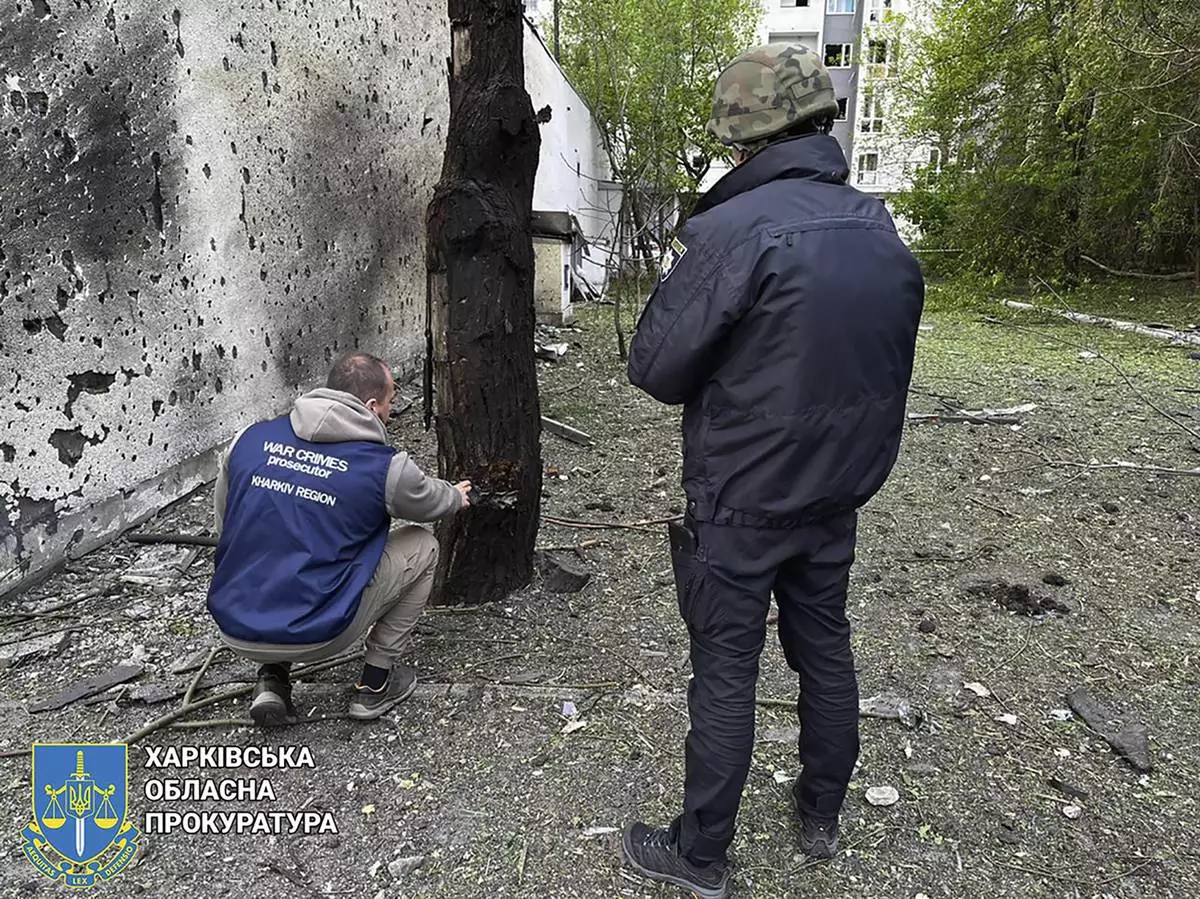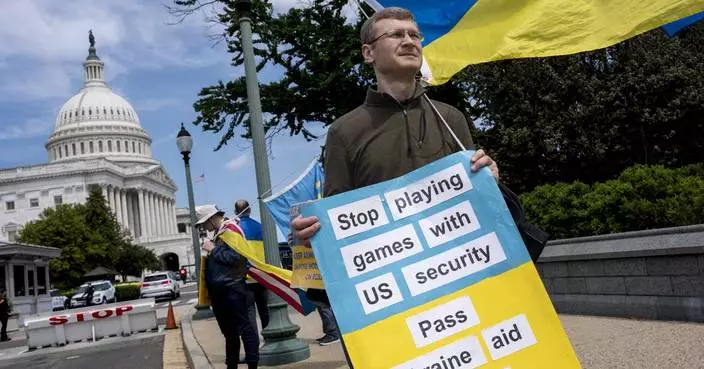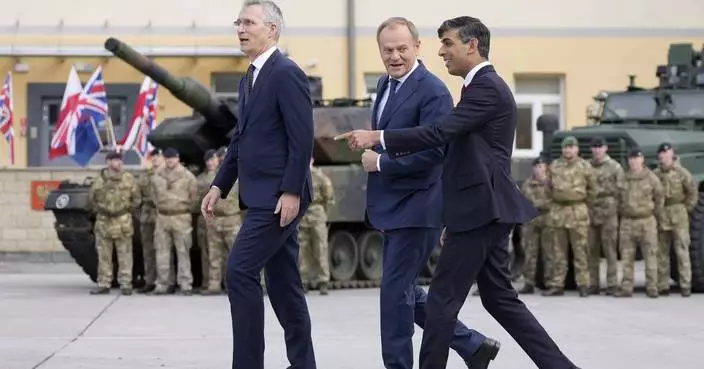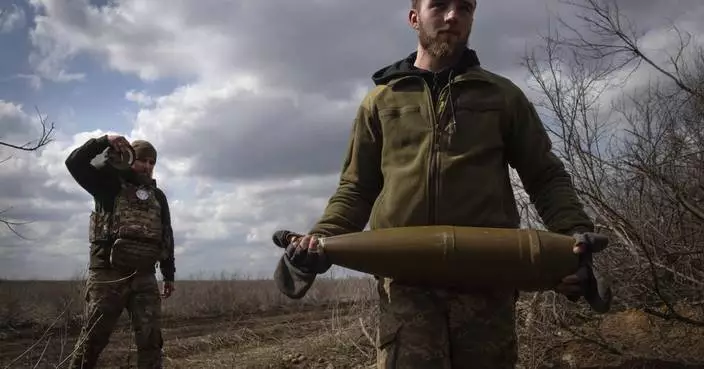At the doors of the Syrian capital, children with wrinkled faces and arms like sticks are going hungry because President Bashar Assad's forces, supported by Russia and Iran, are blocking trucks filled with humanitarian relief.

This photo provided on Monday, October 30, 2017 by UN Office for the Coordination of Humanitarian Affairs (OCHA), shows a child being screened and shown to be severely malnourished in the al-Kahef hospital in Kafr Batna, Eastern Ghouta near Damascus, Syria. (UN OCHA via AP)
As the government and its opponents wrap up another fruitless round of talks in Geneva, humanitarian officials warn that conditions outside Damascus have reached crisis levels, with the government maintaining a siege on the Eastern Ghouta suburbs that has trapped close to 400,000 people without enough food, fuel or medicine for the winter.
They say patients with empty stomachs and kidney failure are dying in their beds while waiting for evacuation to hospitals just minutes away.

This photo provided on Sunday, Nov. 12, 2017 by the World Food Program (WFP), shows a father holding his severely malnourished son in Douma, Eastern Ghouta near Damascus, Syria. (Hussam AlSaleh/WFP via AP)
The fighting in Syria's nearly seven-year war has tapered off in many areas since local cease-fires took hold, but the suffering in Eastern Ghouta — Damascus' once fertile hinterland, now cut off from the world — has only gotten worse.
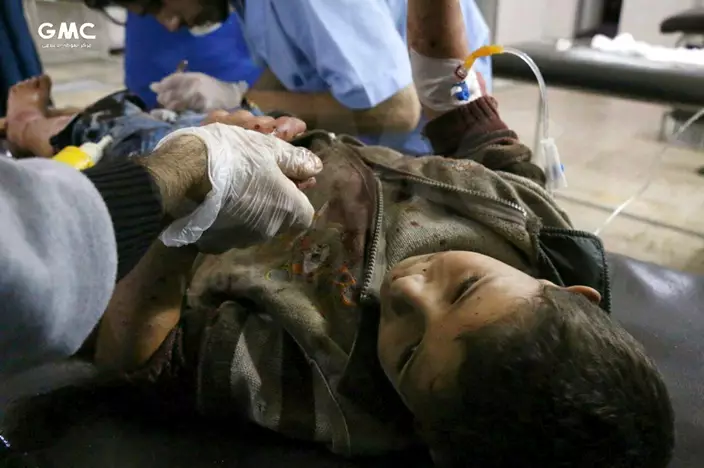
ADVANCE TO GO WITH STORY SYRIA WINTER STARVATION BY PHILIP ISSA, FILE - This file photo provided on Tuesday, Oct. 31, 2017 by the Syrian anti-government activist group Ghouta Media Center, GMC, which has been authenticated based on its contents and other AP reporting, shows an injured boy receiving treatment at a hospital in Ghouta, an opposition-controlled suburb of Damascus, Syria. (Ghouta Media Center via AP, File)
According to the U.N., roughly one in eight children are malnourished in Eastern Ghouta — a shocking jump from one in 50 in May.

This photo provided on Monday, Oct. 30, 2017, by the World Food Program (WFP), shows Amir Qalaa standing for a photograph in Kafr Batna, Eastern Ghouta near Damascus, Syria. (Dima AlHumsi/WFP via AP)
A top U.N. humanitarian official for Syria, Jan Egeland, said last week the government is refusing to allow convoys in. It has also refused to approve a list of nearly 500 people urgently needing medical evacuation.
"We have people here who are only eating a meal every two or three days," Ismael Yasin, a member of Eastern Ghouta's local council told The Associated Press via Skype. "People's faces are turning yellow from hunger."

FILE - This file photo provided on Monday, Sept 25, 2017, by the Ghouta Media Center, a Syrian activist media group, shows smoke and debris rising after Syrian government shelling of the rebel-held Jobar neighborhood of Damascus, Syria. (Ghouta Media Center, via AP, File)
The siege cast a cloud over the eighth round of U.N.-sponsored talks in Geneva, which concluded Thursday without any results. The head of the opposition's delegation, Nasr Hariri, said the impasse on Eastern Ghouta reflected the international community's "shame, impotence, and dereliction."
"It's shameful that we have to go into negotiations so that they (the government) give us some loaves of bread," said Hariri.
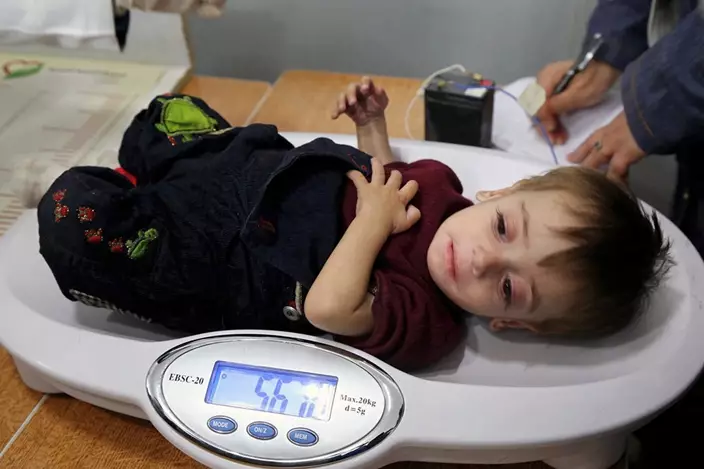
This photo provided on Sunday, Nov. 12, 2017 by the World Food Program (WFP), shows a severely malnourished child being weighed in Douma, Eastern Ghouta near Damascus, Syria. (Hussam AlSaleh/WFP via AP)
The U.N. envoy to Syria, Staffan de Mistura, called the Eastern Ghouta blockade and others like it a "medieval" approach to war. Amnesty International said last month that the government's use of sieges against civilians — a tactic it called "surrender or starve" — was a crime against humanity.
But the tactic has proven brutally effective for the government, which in the last two years has managed to recapture a constellation of towns around Damascus using the same playbook. In Zabadani and Daraya, the government executed its strategy so completely that it managed to completely depopulate the two towns, which had a combined population of about 100,000 people before the war.
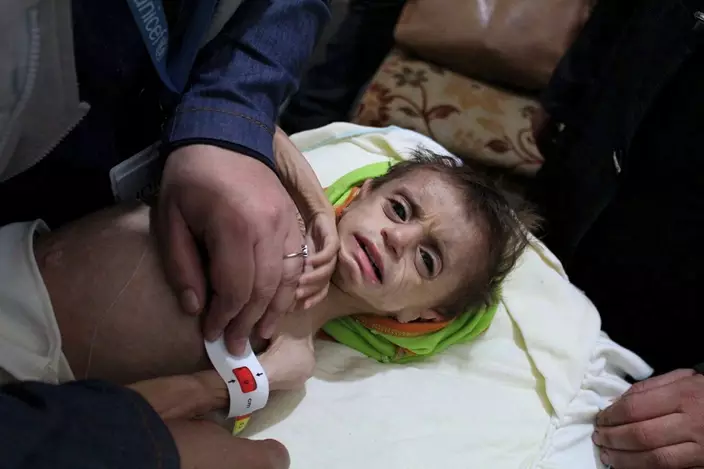
This photo provided on Monday, October 30, 2017 by UN Office for the Coordination of Humanitarian Affairs (OCHA), shows a severely malnourished child at the al-Kahef hospital in Kafr Batna, Eastern Ghouta near Damascus, Syria. (UN OCHA via AP)
The government has followed the same strategy to restore its authority over the cities of Aleppo and Homs. The government denies besieging opposition areas, saying the militants, whom it refers to as "terrorists," withhold aid.
At least three rebel factions still claim a presence in Eastern Ghouta, and send shells whistling into the capital on a daily basis.
In mid-November, a powerful faction called Ahrar al-Sham captured parts of a military base in the region, prompting the government to respond with waves of airstrikes and shelling that killed over 200 civilians, according to the Britain-based Syrian Observatory for Human Rights. Ahrar al-Sham said it attacked the base in response to the deteriorating humanitarian situation.
Shortages have gotten so dire that residents are eating out of the trash and parents are skipping meals so their children can eat, Jakob Kern, the World Food Program's top official in Syria, told The Associated Press.
"They look exhausted, they look tired, and there is this despair in their eyes," said Kern, who entered Eastern Ghouta with one of the few aid convoys the government has allowed in recent weeks.
The convoys have provided just a trickle of relief — supplies for tens of thousands of people that will last only a month or less, at a time when hundreds of thousands are in need.
Photos from Eastern Ghouta show children gaunt with hunger, their skin wrinkled and aged. Mothers are not producing milk to feed their infants, and baby formula is too scarce and expensive for most families to afford. Driven by desperation, some residents are trying to eat animal fodder.
Since at least 2015, there have been Syrians dying every winter of starvation and other medical ailments made worse by the bitter cold. Families in besieged areas, as well as camps for the displaced, burn furniture, plastics, and even the doorframes and roof supports of their homes to cook and stay warm, as the cost of fuel has soared far beyond reach for most.
Much of the country, including the hilly terrain around Damascus, sees freezing rain and snow in the winter months.
Egeland said last week that 12 people have died waiting for medical evacuation from Eastern Ghouta. They were on a U.N.-drawn list first submitted six months ago that has yet to be approved by the government, and now contains 494 names. The U.N.'s children agency said Sunday that 137 children require immediate evacuation for conditions that include kidney failure, severe malnutrition and conflict wounds.
Egeland, in pointed remarks in Geneva, placed full blame on the government for impeding aid shipments across the country.
Eastern Ghouta saw large protests in the early days of the 2011 Arab Spring uprising against Assad. Government forces surrounded the area in 2013, but for most of the last four years, they turned a blind eye to tunnels and above-ground smuggling. Activists say local commanders made huge sums of money from checkpoint bribes, and traders got rich selling to a captive market. Patches of farmland also provided some food.
The government tightened the noose this year, closing the tunnels and nearly all the crossings. Food in Eastern Ghouta at one point was up to 85 times more expensive than in Damascus, just a few minutes' drive away, according to the WFP.
"We need for the siege to be lifted," said Anas al-Dimashqi, a local media activist. "Not just in front of the cameras, as the government does every now and then."



